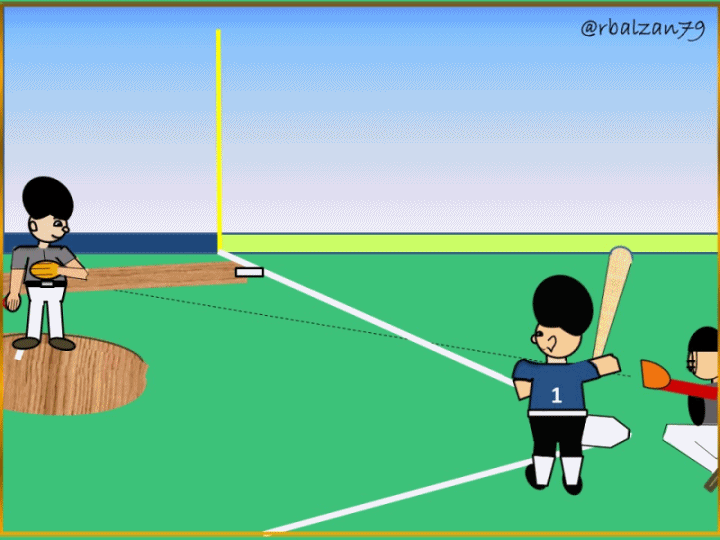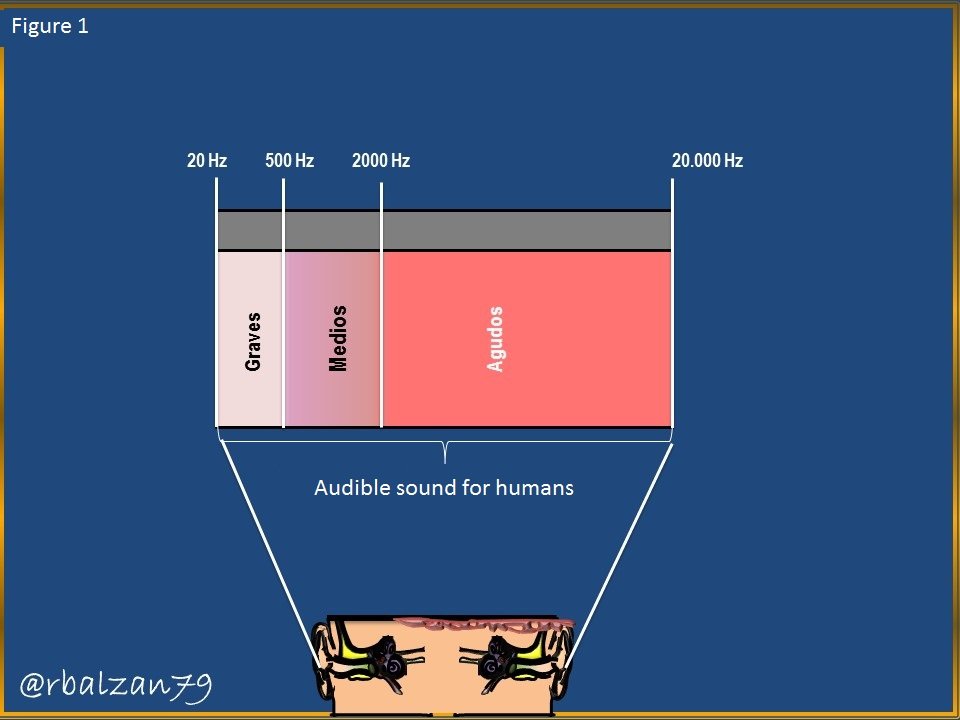Calculation of kinematic and acoustic variables
1 comment

How many scientific links we have today and, thanks to them, we can enjoy even more of our various daily activities and, we know that there are many, and all impregnated with the scientific-technological footprint, that is why, that in this opportunity I want to bring one of many examples of the simultaneous or followed presence of several phenomena while we enjoy some recreational or exciting activity such as sport, in this case baseball, a sport discipline loaded with science, such as statistics, mathematics, physics (kinematics and acoustics), in this case we will focus on two of them, physics and mathematics.
The phenomenon of movement is the cornerstone for the development or generation of other essential phenomena in our lives, and this phenomenon analyzed by the kinematics, from the vibratory motion of the component particles of a given body or object sounds are produced, some we perceive them and others do not, that is why I will share the following figure 1, indicating the acoustic spectrum according to their frequency perceived by the human ear.

Therefore, we will continue analyzing the phenomenon of sound generated by any daily activity and also analyze the rectilinear motion, all this through the launch of a baseball by a person who is called a pitcher or pitcher, the truth is that through this action is possible to analyze kinematic and acoustic magnitudes, so then I share a practical exercise to achieve the objective.
Exercise
In a baseball game the pitcher has an average of 0.42 seconds to get his pitch to home plate, this wonderful feature allows constantly generate a sound to impact the ball with the pet or glove of the receiver, the sound of the ball with the glove propagates through the air whose propagation speed is 340 m/s, generating a wavelength of 0.45 meters, the distance between the player and the receiver is 60 feet and 6 inches, which is the same 18.44m, we must take into account that the ball leaves the rest and starting the rectilinear motion with a constant acceleration of 103.7 m/s2, in relation to everything expressed above answer the following questions:
a.- What is the average speed of each pitch in km/h and mph, taking into account the average time to get the ball to home plate?
b.-What would be the frequency of the sound emitted by the impact of the ball with the catcher's glove?
Solution
Data:
V = ? (Velocity of the ball thrown by the pitcher).
t = 0.42 s (Average time for the ball thrown by the pitcher to reach the catcher).
a = 103.7 m/s2.
Vm = 340 m/s (Velocity of the sound propagation medium).
ʎ = 0.45 m (wavelength).
fo = ? (Frequency of the emitted sound).
a.- To give an answer to our first question we must locate the appropriate kinematic formula related to our rectilinear movement carried out by the throwing of the pigeon, therefore, in this occasion we will use the following formulation.

By implementing formula 1, we obtained the previous result, however, we must transform the units until we reach the required ones, therefore, we start by taking the previous value to Km/h.

This way we obtain our first requested value in Km/h, now we take it to mph.

Thus we were able to transform the initial value of m/s to both Km/h and mph, in this way we obtained the values requested in our first question, giving as a result that the pitcher is throwing 98 mph, something very impressive in the world of baseball, of course, this is done by means of straight pitches.
b.- For our second unknown we use a formulation related to acoustic magnitudes, such as speed of propagation of sound in the air, wavelength, in order to find the frequency of the sound generated by the impact of the ball with the receiver's glove, for this we implement the following formulation.

From this formula 2 we clear the frequency:

In this way, we obtain the frequency of the sound emitted during the pigeon throws in relation to the above-mentioned characteristics.
Conclusion
Sounds are everywhere and we can perceive them at all times as long as they are within the audible range for our natural hearing systems (ears), in this case the value of the calculated frequency was 755, 6 Hz, so that this frequency according to the frequency range shown in Figure 1, it is a medium frequency sound for our ears, that is, within 500 to 2000 Hz, therefore, between a low and high-pitched sound.
In relation to the speed of the ball launch is admirable for any human arm, we know that in this sport it is fascinating to see this type of straight launch at such an impressive speed and even many pikers exceed 100 mph, this led us to analyze the rectilinear motion from a kinematic view, but also from an acoustic approach by calculating the frequency of the sound emitted by the ball upon impact with the catcher's glove.
In this way we can find any other example where we can make a joint analysis of variables of kinematic and acoustic aspect, we are surrounded by this at all times, and the most important thing is that thanks to the knowledge provided by science we can enjoy even more of these wonderful sports disciplines.
Until another opportunity my dear friends.
Note: The images were created by the author using Power Point and Paint, the animated gif was created with PhotoScape.
Recommended Bibliographic References
[1] SPEED OF SOUND. Link.
[2] MOVIMIENTO ONDULATORIO. Link.
[3] El movimiento rectilíneo. Link.
[4] Propiedades de las ondas sonoras. Link.
Comments